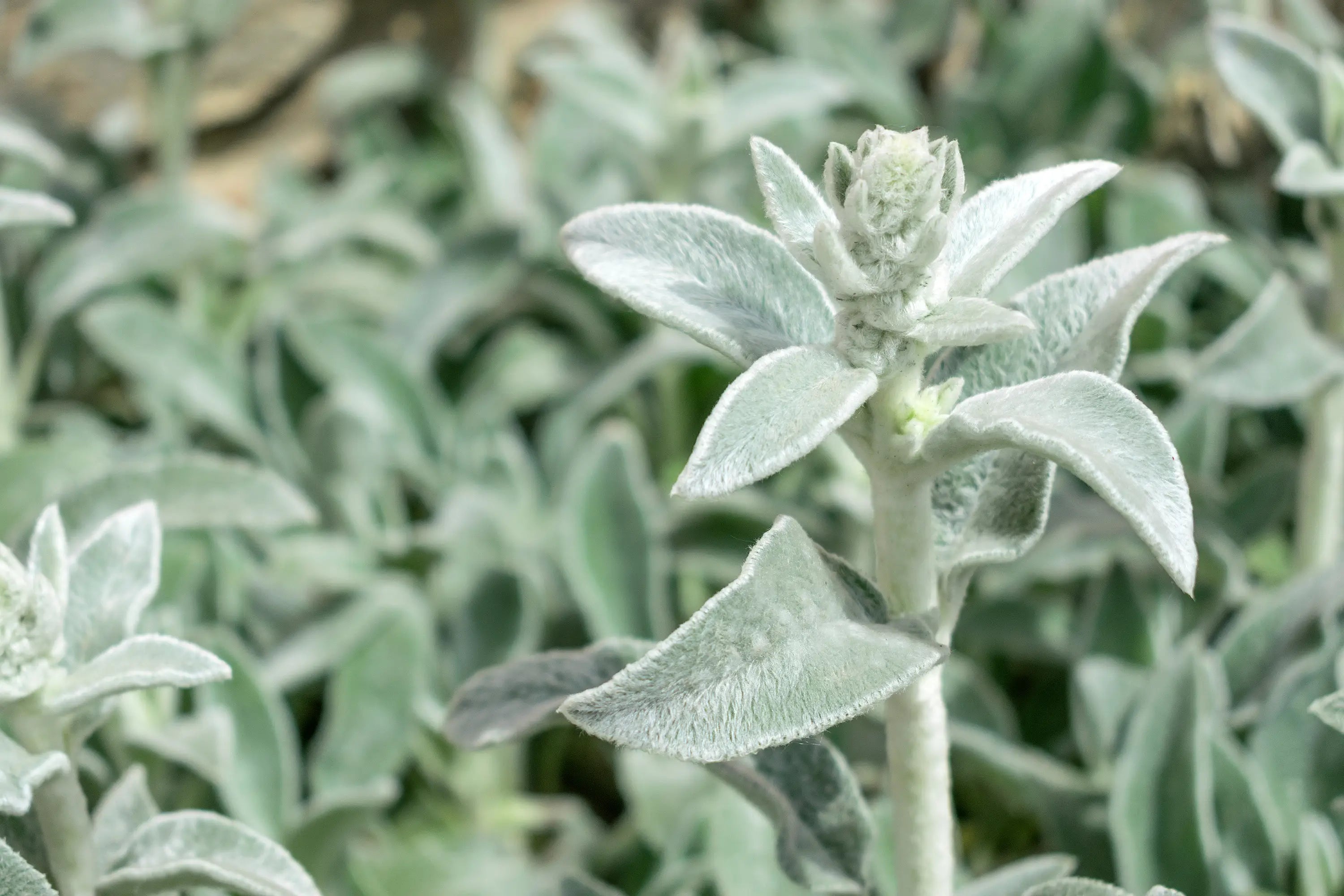There are many doppelgängers in the world of flora. Some are simple mistakes, as false pennyroyal may appear similar to rosemary, but won’t taste very good on roasted potatoes. Other look-alikes may be dangerous, like poison hemlock; it looks almost exactly like wild carrots, but unlike a wild carrot, hemlock is toxic.
Fortunately, many pairs of plant doppelgängers are helpful rather than hurtful. Today, we’ll be discussing two herbs that are often confused for one another: lamb’s ear and mullein.
When it comes to herbs that are both unique and useful, lamb's ear and mullein are two fascinating contenders. While they belong to different botanical families, the two have remarkably similar appearances. Though both plants offer a range of benefits—many of which are alike—that make them valuable additions to any natural supplement cabinet, it can be difficult to choose which one is right for you.
Read on to learn more to learn the differences, similarities, and uses for each plant to help you decide between lamb’s ear vs. mullein.
What is Lamb’s Ear?
Lamb’s ear, known by its Latin name Stachys byzantina, is a perennial herbaceous plant in the mint family that is native to the Middle East, specifically Armenia, Iran, and Turkey. As its name suggests, lamb’s ear has soft, fuzzy leaves that both look and feel like the ear of a young lamb. Greyish-green in color with flowers that provide a striking pop of purple, lamb’s ear is most frequently grown as an ornamental plant and can be found in gardens all over the world.
When contrasting lamb’s ear vs. mullein, it is easiest to see the difference between the two when in full bloom, as lamb’s ear’s distinctive bright purple flowers make it easier to identify.
More than just a lovely addition to flower beds, lamb’s ear has been used in traditional herbal remedies for generations. In the past, lamb’s ear has been used as a topical antiseptic for its wound-healing properties. Its leaves contain natural antibacterial agents that can actually help soothe minor cuts, burns, or insect bites.
Since the invention of Neosporin and Band-Aids, lamb’s ear has become most popular as an herbal supplement due to its antibacterial, antimicrobial, and antiseptic properties. Lamb’s ear is also thought to have anti-inflammatory effects, making it a popular herb for those looking to add to a pharmaceutical pain management routine. It can be taken as a supplement or in an herbal tea, the latter of which is a popular choice for those on an herbal cleanse.
What is Mullein?
Also known as flannel leaf or velvet plant, mullein is a flowering plant native to Europe that exists within the scientific family of the same name. Mullein was first introduced to the rest of the world as a toxin used to stun fish in order to make them easier to catch. Fortunately, mullein is not poisonous to humans and is commonly used in herbal remedies.
Mullein is similar in appearance to lambs ear, as it has broad, rounded leaves that are covered in hairs and soft to the touch. However, when examining the differences between lamb’s ear vs. mullein, mullein leaves are a brighter, more yellow green. Additionally, mullein flowers appear in a more spike-like fashion at the top of the plant—similar to ornamental agave—that are more yellow or green in appearance.
Both the great mullein ( Verbascum thapsus) and denseflower mullein ( Verbascum densiflorum) are used as herbal supplements and are often used interchangeably. Due to its anti-inflammatory, antioxidant, and antiviral properties, mullein is often used by those looking to give their immune system a natural boost.
Lamb’s Ear vs. Mullein: Which Herb is Right for You?
Both these fuzzy, flowering plants are effective supplements when used correctly. Here are the best uses for each herbal supplement to help you choose between lamb’s ear vs. mullein:
Lamb’s Ear Benefits and Uses
- Antibacterial and astringent properties make lamb’s ear an effective natural bandage, though it must be fresh to reap this benefit.
- Anti-inflammatory agents may help relieve inflammation that causes pain, making it a popular choice for those experiencing menopausal or menstrual symptoms.
- Antimicrobial properties make lamb’s ear a great addition to an herbal cleanse, as
Mullein Benefits and Uses
- Anti-inflammatory properties may help relieve the inflammation that causes pain, making mullein a popular herbal supplement for those looking for a natural alternative to pharmaceuticals.
- Mullein has been used as a historical expectorant, which may be beneficial for those who suffer from allergies.
- Antioxidant and antiviral properties within the mullein plant make it a fantastic way to bolster the immune system before cold season.
Both lamb’s ear and mullein have been used in traditional medicines for centuries and are still useful in your own herbal remedies in today’s modern world. Still not sure which is the best choice for you? Compare lamb’s ear vs. mullein supplements in our supplement shop.
Explore more articles:
- Mullein Leaf for Lungs: A Natural Remedy for Respiratory Issues
- 4 Powerful Benefits of Mullein Tincture for Lungs: Is Mullen Leaf Good for Lung Cleanse?
- Mullein for Ear Infection and More: A Safe and Natural Remedy
- What Are The Best Herbs For Detoxing Liver?
- Top 5 Herbs for Heart Health
Written by: Glen Green, Herbal Copywriter at Secrets of the Tribe
Reviewed by: Secrets of the Tribe Herbalists





Share:
Natural Sea Moss: Nutrition, Benefits, and More
5 Promising Benefits of Amla